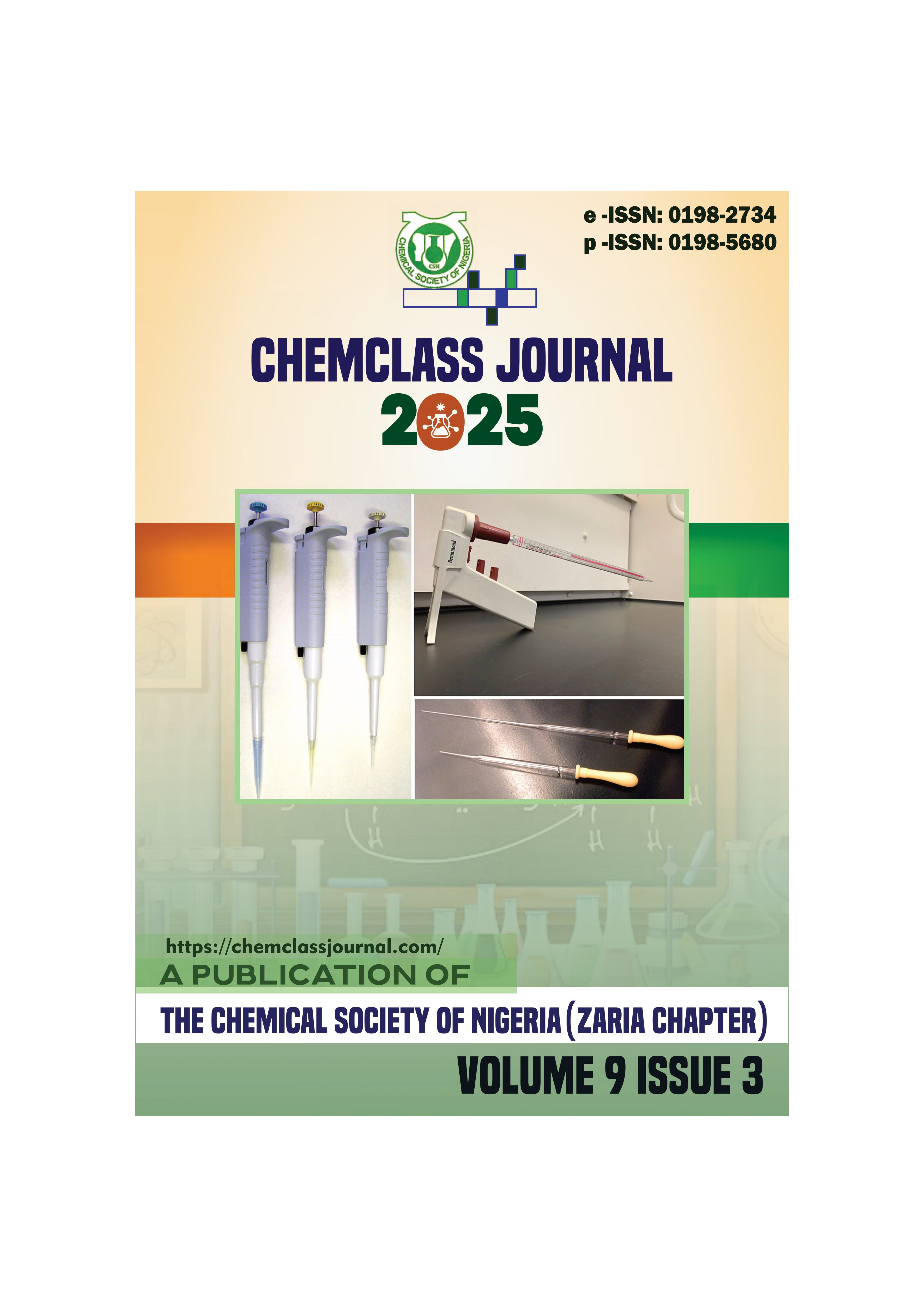Phytochemical Profiling and FTIR Analysis of Semi-polar Extracts from Digitaria horizontalis Aerial Parts
DOI:
https://doi.org/10.33003/chemclass-2025-0903/21Keywords:
Thin layer chromatography, Digitaria horizontalis , Retention Factor, Phytochemical screeningsAbstract
Digitaria horizontalis is a grass species commonly found in tropical and subtropical regions. In traditional medicine, it is used as a local antibiotic to treat various ailments such as wound infections, inflammatory diseases, and gastrointestinal disorders. The study aims to investigate the phytochemical composition and characterize the functional groups present in the semi-polar extracts of D. horizontalis aerial parts through phytochemical profiling and Fourier Transform Infrared (FTIR) spectroscopy. The plant materials were shade-dried and pulverized to powder and cold macerated with chloroform and ethyl acetate each for 48 hours to afford chloroform and ethylacetate extracts respectively. Phytochemical screening was conducted on the extracts using standard procedures. Preparatory TLC was conducted on the extracts using the appropriate solvent system. FTIR (4000-650 cm-1) analyses of chloroform extract (CE) and ethyl acetate extract (EAE) were conducted by dissolving 10 mg of the samples in 0.5 cm3 deuterated solvents. The percentage yield of the extracts shows that EAE has the highest recovery (5.57%) and the CE (4.48%). Phytochemical screening conducted on CE and EAE indicated the presence of saponins, cardiac glycosides, carbohydrates, tannins, flavonoids, alkaloids, anthraquinones, steroids, and coumarins. FTIR analysis provided insight into the functional groups present (–NH, -CH, -CH3. –C=O, C-C, C=C, -OH and –NO) in the extracts, aiding in the compound identification. In conclusion, the aerial parts of D. horizontalis contain potential phytoconstituents with major functional groups of alcohol, aldehyde, carbonyl compounds, amines, phenol, and nitro and thus should be studied further for possible isolation.





 ChemClass Journal
ChemClass Journal
